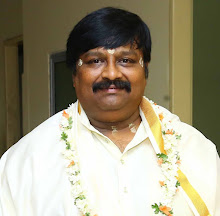Sri Narahari Theertharu was a leading minister in Kalinga, Orissa, and was performing this task for around thirty years. It is impossible to tell the story of Narahari Tirtha without being captured by the pastime he had with the Deity of Sri Mula Rama (as picture bellow).

The story follows that during his spell in office, the King of Kalinga died. The King's ministers, from time immemorial, had a tradition that the State send out the "State or Royal Elephant" to find the Prince Regent. At that time the royal elephant walked out of the palace and through the city to the place where Narahari was. The elephant placed the coronation garland around his neck to the surprise of the accompanying state ministers. By the Lord's arrangement the elephant came across Narahari, and in due course he was placed on the throne. However, when the King's infant son and heir to the throne came of age after twelve years, Narahari gave it up. Out of gratitude, the new King wanted to bestow some gifts on Narahari. Narahari asked for the Deity of Mula Rama that had been kept by the descendants of the Gajapati Kings, and Who was originally worshipped by Maharaja Iksvaku, then given to Maharaja Dasaratha, the father of Lord Rama. This Deity of Rama was then passed down to Laksmana and from him to Hanuman, who used to hang Him around his neck. Hanuman gave Him to Bhima during the time of Krsna's advent on this earth, and Bhima gave Him to the Gajapati King. This Deity of Mula Rama then placed in the Uttaradi Mutt, secured in his day by Kavindra Theertharu, but now resides at Raghavendra Theertha Swami Mutt at Mantralayam.
At the time of dividing the Mutts at Kanva Thirtha, Sripad Madhwacarya gave Narahari Theertharu the Deity of Kaliyamardana Krsna with four arms. This Deity of Krsna is dancing on the head of the Kaliya serpent, with one leg lifted up dancing, one hand in a balancing, dancing pose, and the other hand holding Kaliya's tail up. The mood is not of that of Sri Krsna, in that the Deity resembles that of Lord Narayana having another two hands in which hold a shanka and chakra, unlike Sri Vrindavan Chandra Krsna.

Kalinga Mardana, Adamaru Matha
Sri Narahari Theertharu was initiated before 1264 AD., B.N.K Sharma suggests (B.N.K. Sharma. 1961. History of the Dvaita School of Vedanta. page 227), that he was probably about 22 years of age when Sri Narahari Theertharu and Sriman Madhwacharyaru first met, Sriman Madhwacharyaru then being 19 years of age. There are local inscriptions of the time preserved in the Sri Kurman Kshetra and Simhacalam areas of Orissa which glorify Narahari for many great feats, statesmanship and swordsmanship, but even whilst performing these kingly tasks, he preached Vaisnavism and made many devotees from the princes and aristocratic nobility in general at the time in the areas of Orissa and Andhra Pradesh.
Sometimes it is suggested that he was the disciple of Padmanabha Theertharu but this is not supported anywhere in the mutt listings, instead what is pointed out is that due to the seniority of Padmanabha Theertharu, Narahari Theertharu was humbly more than willing to serve him as the representitive of his spiritual master Sriman Madhwacaryaru, and so was considered like a 'siksakha' disciple of the new Pithadi Patya Padmanabha Theertharu.
Once while Sri Narahari Theertharu was on a preaching tour, he dreamt that a Deity of Lord Visnu was at the bottom of the town pond (tank). The very next day, by his influence, he made arrangements for the tank to be dredged, and there He was! The four armed for of Lord Narayana. The Deity was taken out and installed at that place. The town is now called by the name of the pastime, Narayanadevarkere (the tank of Lord Narayana). This is near Hospet Taluk of Bellary District, Northern Karnataka.
Sri Narahari Theertharu wrote fifteen books, but his Gita Bhasya and Bhavaprakasika are the only two of which any trace is kept.
Though presumably not of Kannada origin, many of his works were in that language though only three compositions in Kannada have been recovered. They are
yanthu marulade nanenthu ...
hariye idu sariye..
tiliko ninnologe neene...
Sri Narahari Theertharu was responsible for the conversion of many princely and aristocratic families of Kalinga and Andhra regions to Madhva fold. The descedants of these families still flourish in the coastal Andhra and adjoining states. Though some allude to the belief that Narahari Theertharu was indeed the founder of the Haridasa movement, others based on the strength internal evidence of songs confirm that it was Sripadaraya who pioneered the haridasa movement, almost a century later.
Sri Narahari Theertharu is also attributed to be the founder of The Yakshagana and Bayalata dance and cultural art forms which is still flourishing in parts of Karnataka, Kasargod in Kerela and is gaining wide-spread attention around the world and in Bangalore as well.
He is also the founder of the Kuchipudi dance form when he was the "mathadhipathi"(high-priest) of his mutt in Srikakulam in Andhra Pradesh.

No comments:
Post a Comment